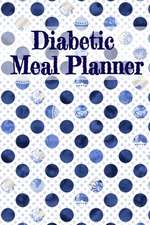Atlas of Exfoliative Cytopathology
Autor Syed Z Ali, Christopher J Vandenbussche, Cheng-Ying Ho, Doreen N Palsgrove, Derek Allison, Ashley Cimino-Mathewsen Limba Engleză Hardback – 30 dec 2017
Over 500 high-resolution color images demonstrate the important cytomorphological features and pitfalls encountered in exfoliative specimens. The book provides detailed descriptions for entities encompassing variations of benign serous lesions, peritoneal, pericardial and pleural fluids, cerebrospinal fluid, bronchial brushings and washings, normal and induced sputum, gastric exfoliative specimens, and anal Pap tests. Additionally, selected images demonstrating histopathologic characteristics of the lesions for morphologic correlation will appeal to cytopathologists and surgical pathologists alike. Written by experts from The Johns Hopkins University School of Medicine, Atlas of Exfoliative Cytopathology with Histopathologic Correlations is an invaluable resource for any pathologist looking to improve diagnostic skills and patient outcomes using various exfoliative techniques.
Key Features:
- Contains over 500 outstanding color illustrations
- Includes cytologic variations of effusions, brushings, washings, and smears from non-gynecologic and non-urinary sites.
- Provides clear descriptions of entities and practical diagnostic guidance
Preț: 1033.92 lei
Preț vechi: 1088.35 lei
-5% Nou
Puncte Express: 1551
Preț estimativ în valută:
197.91€ • 207.75$ • 163.48£
197.91€ • 207.75$ • 163.48£
Carte disponibilă
Livrare economică 09-23 ianuarie 25
Preluare comenzi: 021 569.72.76
Specificații
ISBN-13: 9781620701102
ISBN-10: 1620701103
Pagini: 202
Dimensiuni: 238 x 267 x 17 mm
Greutate: 0.78 kg
Editura: Springer
ISBN-10: 1620701103
Pagini: 202
Dimensiuni: 238 x 267 x 17 mm
Greutate: 0.78 kg
Editura: Springer
Descriere
Provides a comprehensive reference for interpreting body cavity fluid, respiratory, and gastrointestinal exfoliative cytopathology specimens. Generously illustrated and user-friendly, this atlas guides the reader through common and unusual non-gynaecologic and non-urinary exfoliative specimens to detect neoplastic and non-neoplastic disease.




















